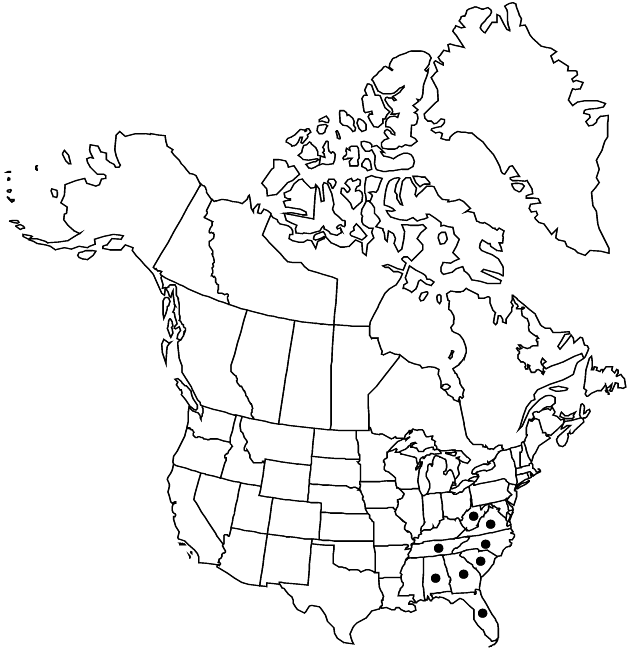Rudbeckia fulgida var. spathulata
Rhodora 59: 298. 1958.
Common names: Orange coneflower
Endemic
Basionym: Rudbeckia spathulata Michaux Fl. Bor.-Amer. 2: 144. 1803
Revision as of 20:08, 5 November 2020 by imported>Volume Importer
Stems glabrous or sparsely strigose (hairs spreading). Leaves: basal blades mostly narrowly oblanceolate, 0.5–2 cm wide, lengths to 2 times widths, bases attenuate, margins entire, serrate or dentate, faces sparsely strigose; cauline usually petiolate, rarely sessile, blades oblanceolate to broadly spatulate or pandurate, notably smaller distally, bases attenuate, margins entire or serrate, faces moderately hairy. Phyllaries spreading to reflexed, 0.5–1 × 0.2–0.5 cm, pilose abaxially, glabrous adaxially. Receptacles 10–14 mm diam.; palea margins ciliate, faces glabrous. Ray florets 10–16; laminae 15–25 mm.
Phenology: Flowering late summer–fall.
Habitat: Wet woodlands, meadows, and clearings
Elevation: 30–200 m
Distribution

Ala., Fla., Ga., N.C., S.C., Tenn., Va., W.Va.
Discussion
Selected References
None.
Lower Taxa
None.